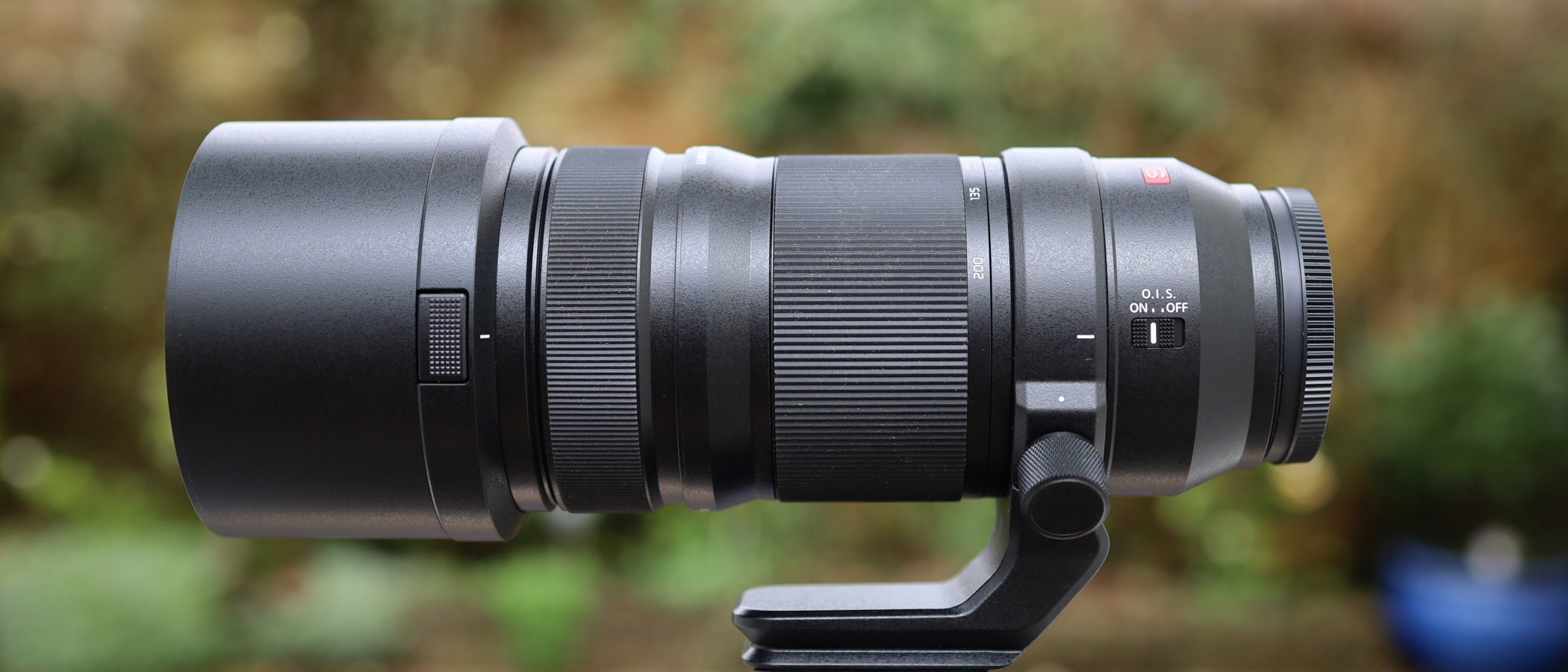Digital Camera World Verdict
Smaller and only about two-thirds the weight of Panasonic’s 70-200mm f/2.8 L-mount zoom, this f/4 lens feels well-balanced on S-series full-frame mirrorless cameras for handheld shooting. Even so, it comes complete with a tripod mounting ring, which is usually sold as an optional extra for 70-200mm f/4 lenses. Sharpness is epic throughout the entire zoom range, enhanced in practical terms by the optical image stabilizer which works in tandem with the sensor-shift system in S-series bodies. All in all, it’s a great buy.
Pros
- +
Solid and sturdy, weather-resistant construction
- +
Autofocus is very fast and virtually silent
- +
Removable tripod mounting ring with Arca-Swiss compatible foot
Cons
- -
Push-pull focus ring won’t be to everyone’s taste
- -
Quite pricey for a 70-200mm f/4 lens
Why you can trust Digital Camera World
A 70-200mm f/2.8 zoom is often regarded as one of the ‘holy trinity’ of lenses for full-frame cameras, along with similarly ‘fast’ wide-angle and standard zooms. However, there’s a lot to be said for downsizing to an f/4 zoom.
• Read more: Best L-mount lenses
Not only are they cheaper to buy, but they’re smaller and more lightweight, making them easier to carry around and more comfortable to use in sustained handheld shooting. The Panasonic Lumix S Pro 70-200mm f/4 OIS f/4 is a classic case in point, with a manageable weight of 985g compared with 1,570g for Panasonic’s bigger f/2.8 zoom.
Specifications
Mounts: L-mount
Full frame: yes
Autofocus: yes
Lens construction: 23 elements in 17 groups
Angle of view: 34-12 degrees
Diaphragm blades: 9
Minimum aperture: f/22
Minimum focusing distance: 0.92m
Maximum magnification ratio: 0.25x
Filter size: 77mm
Dimensions: 84x179mm
Weight: 985g
Key features
Although it has a modest f/4 aperture rating, this S Pro zoom lens is certainly feature-rich. It’s based on a high-tech optical path that includes one aspherical element, one UED (Ultra Extra-low Dispersion) element and three further ED elements, plus a UHR (Ultra High Refractive index) element.
Further attractions include a dual autofocus drive that features both linear and stepping motors. This aims to deliver fast and highly autofocus performance in virtual silence, ideal for shooting sporting action and even more perfect for tracking wildlife on the move.
Sharpness in real terms isn’t just about optical quality but, especially for telephoto lenses, relies on stillness and steadiness while shooting. As such, the lens has a built-in optical image stabilizer which works in conjunction with the 5-axis, sensor-shift stabilization of S series camera bodies. They team up to deliver as much as a 6-stop benefit in beating camera-shake.
Build and handling
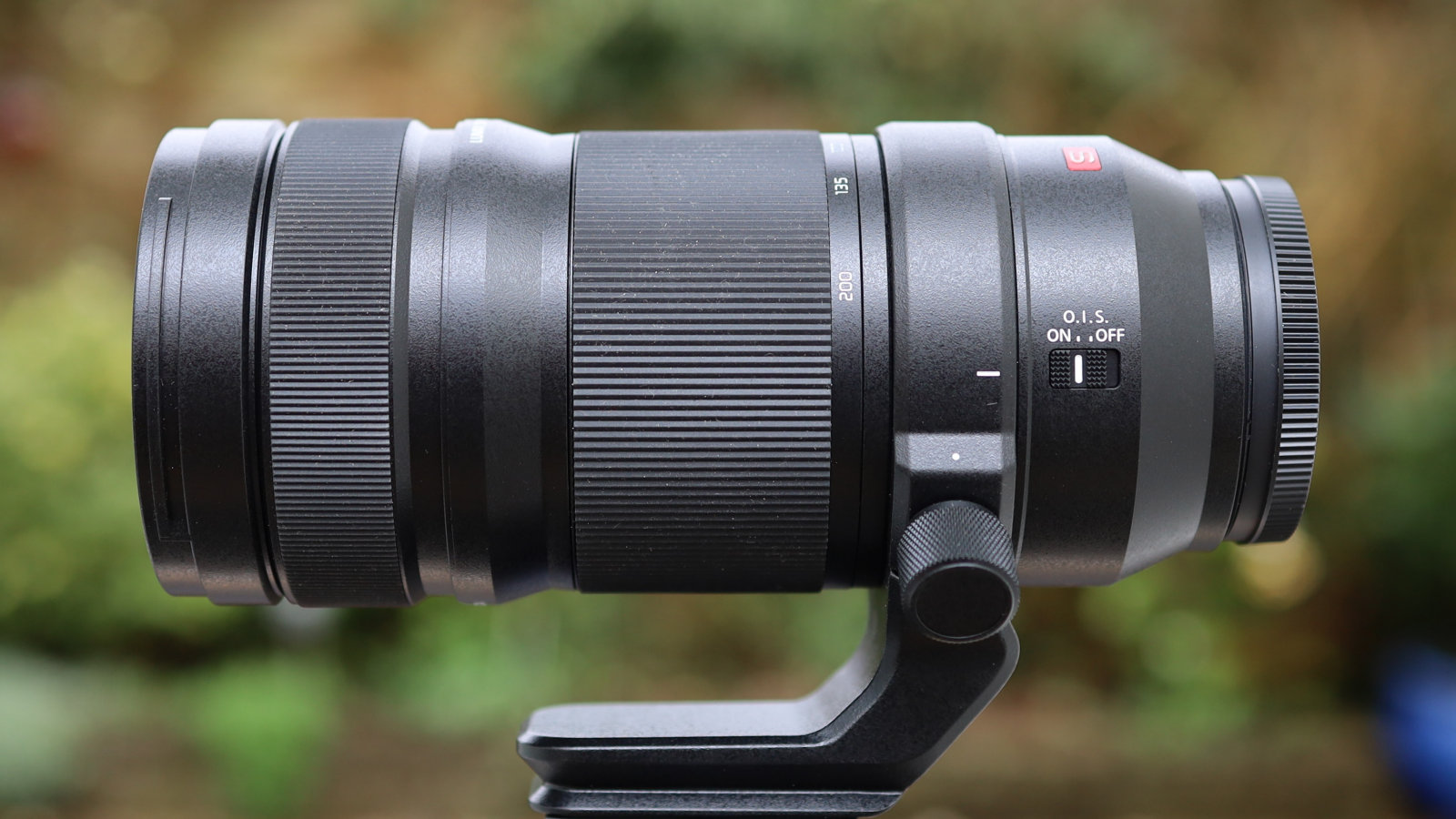
Despite weighing in at less than a kilogram, the lens is supplied with a tripod mounting collar, whereas this is sold as a pricey optional extra for similar 70-200mm f/4 zooms from the likes of Canon and Nikon. It’s easily removable if you don’t want to use it but is a high-quality item that enables a perfect balance and easy switching between landscape and portrait orientation when shooting with a tripod or monopod. Usefully, the ring’s mounting foot is directly Arca-Swiss compatible.
Unlike in Panasonic’s S Pro 50mm f/1.4 lens, there’s no aperture ring but the focus ring has the same clutch mechanism that enables swapping between autofocus and manual focus with a simple push-pull action. It also has the same handling benefit that pulling the ring back for manual focus reveals a focus distance scale, which is highly unusual for a lens with this type of autofocus system.
The overall construction is very solid and robust, with a high-quality feel to all the components. Weather-seals are employed to ensure dust- and splash-resistance, and the lens is freezeproof down to -10 degrees Celsius (-14 degrees Fahrenheit). Like most constant-aperture 70-200mm lenses, both of the zoom and focus mechanisms are completely internal, so there’s no physical extension at any setting, and the front element doesn’t rotate during focusing.
Performance & image quality

This pair of shots demonstrates the available zoom range, shot at focal lengths of 70mm and 200mm

Despite being not much larger and barely any heavier than Panasonic’s S Pro 50mm f/1.4 lens, the 70-200mm naturally gives a much longer range of focal lengths. Impressively, it maintains excellent sharpness and contrast throughout its entire zoom range, even when shooting wide-open at f/4. Sharpness does drop off a bit towards the extreme edges and corners of the frame, but still remains excellent for a telephoto zoom.
Other areas of image quality are similarly impressive, with negligible colour fringing, effectively no distortion and very good control over ghosting and flare. Autofocus is super-speedy and image stabilization is highly effective. All in all, this lens is a great performer.

Throughout the zoom range, in-focus regions are super-sharp with a smooth transition to defocused areas. Bokeh remains good when stopping down a little, helped by a well-rounded 9-blade diaphragm



Shot at both ends of the zoom range, wide-open at f/4 these two shots show the quality of bokeh, and that you can still get a fairly tight depth of field even without a faster f/2.8 aperture

Lab data
We run a range of lab tests under controlled conditions, using the Imatest Master testing suite. Photos of test charts are taken across the range of apertures and zooms (where available), then analyzed for sharpness, distortion and chromatic aberrations.
We use Imatest SFR (spatial frequency response) charts and analysis software to plot lens resolution at the centre of the image frame, corners and mid-point distances, across the range of aperture settings and, with zoom lenses, at four different focal lengths. The tests also measure distortion and color fringing (chromatic aberration).
Sharpness:
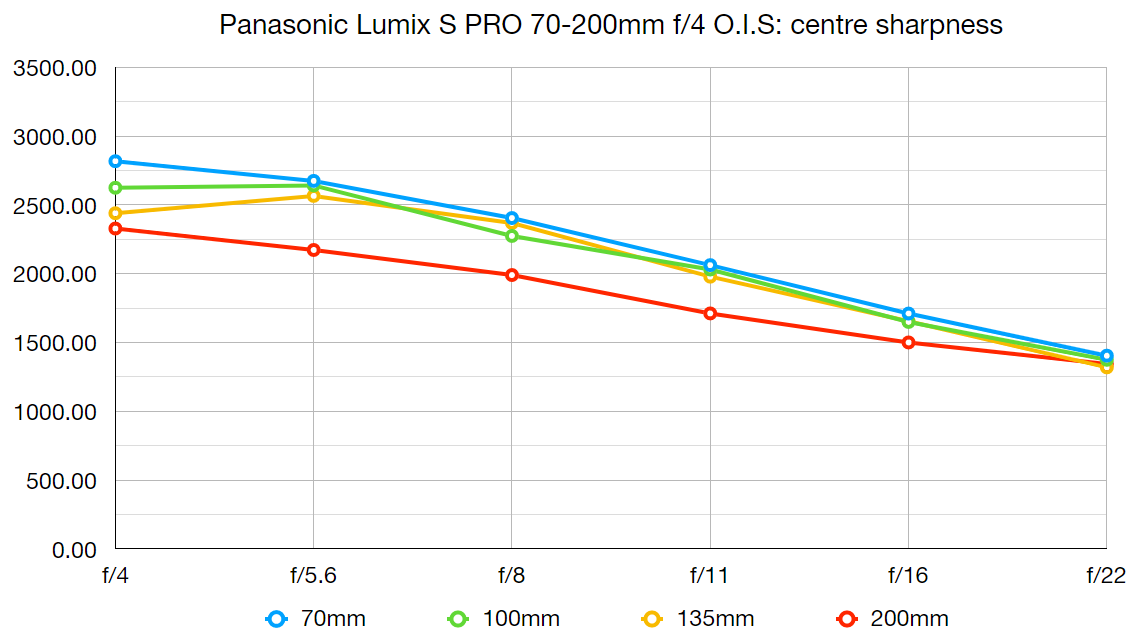
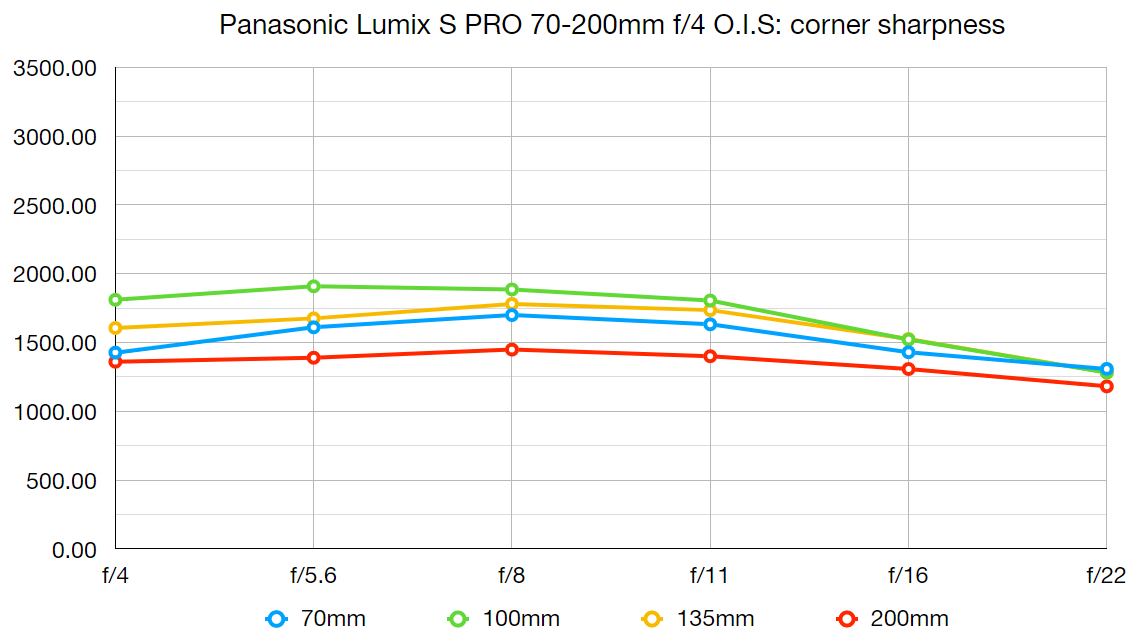
Wide-open sharpness is pretty amazing and, for a telephoto zoom, there’s not very much drop-off towards the corners of the image frame.
Fringing:
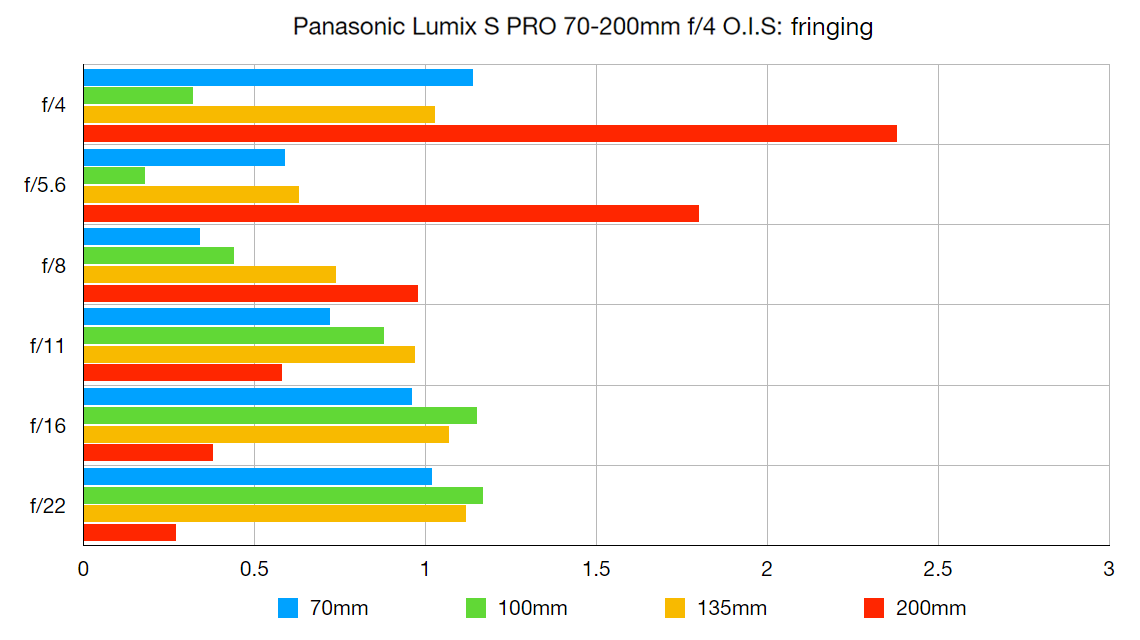
There’s only a little colour fringing when shooting at 200mm, f/4 and even less at other settings.
Distortion:
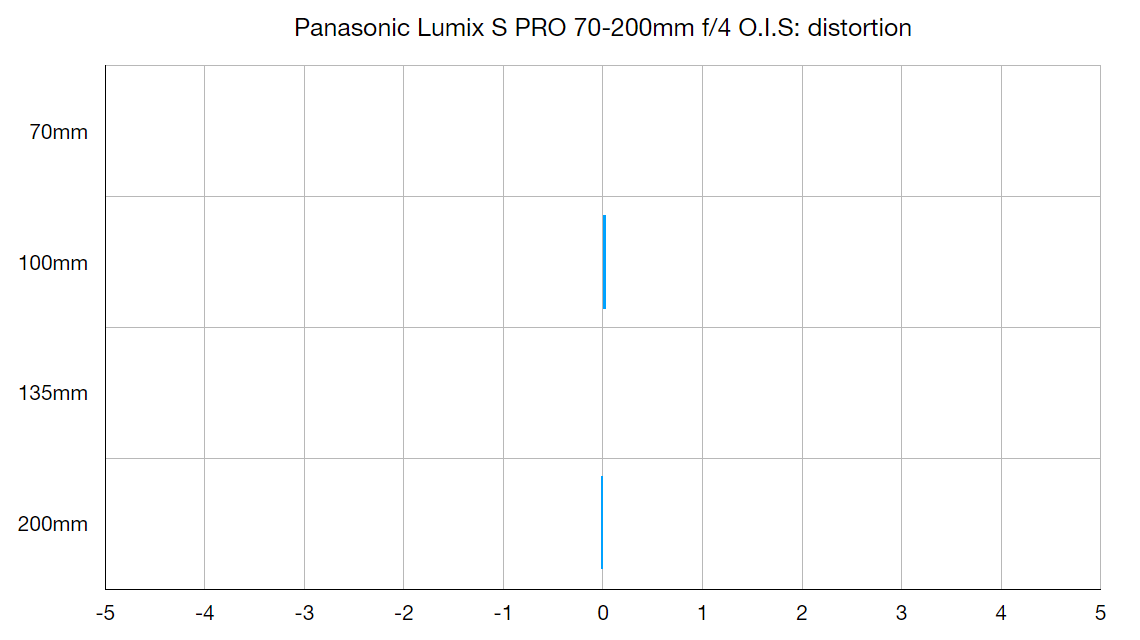
Helped by automatic in-camera corrections, there’s essentially no distortion at any focal length.
Verdict
This Panasonic S Pro lens is pretty pricey for a 70-200mm f/4 zoom but you get what you pay for. The performance of the autofocus and stabilization systems is excellent and image quality is superb in all respects. Unless you really need the faster aperture rating of Panasonic’s 70-200mm f/2.8 zoom, this less expensive and more lightweight lens is the more sensible choice.
Read more
• Best L-mount lenses
• The best 70-200mm telephoto lenses
• Panasonic S1R review
• Panasonic S1 review
Matthew Richards is a photographer and journalist who has spent years using and reviewing all manner of photo gear. He is Digital Camera World's principal lens reviewer – and has tested more primes and zooms than most people have had hot dinners!
His expertise with equipment doesn’t end there, though. He is also an encyclopedia when it comes to all manner of cameras, camera holsters and bags, flashguns, tripods and heads, printers, papers and inks, and just about anything imaging-related.
In an earlier life he was a broadcast engineer at the BBC, as well as a former editor of PC Guide.

